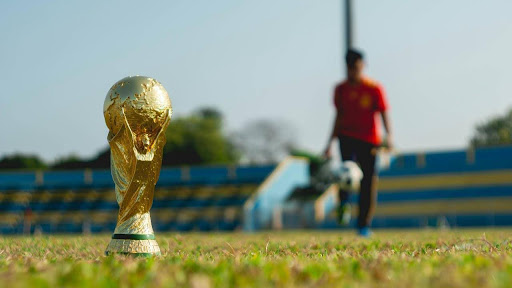Although soccer is the most popular sport in many countries in Asia, there has never been a men’s World Cup Winner from the region. The Asian Football Confederation (AFC) stretches from the Middle East to Australia but nations that have lifted the famous trophy have all come from Europe and South America.
But there has been something of a shift in recent years. The next World Cup – taking place in the US, Canada, and Mexico in 2026 – will have more Asian teams than ever before and they will be following on from the success in 2022. Fans might be getting confident and getting ready to use the bonus that bookmakers offer new customers on a wager – but the favorites will still be national sides more familiar with winning global events.
Unfortunately, Thailand has already been knocked out of the qualifying campaign. But all Asian eyes will be on the tournament in two years’ time to see whether one of the best teams from the region will finally win the most prestigious competition in international soccer. Here’s a quick recap of how Asian teams have fared over the years.
Representation
The first two instalments of the FIFA World Cup took place without any Asian representation at all. The first Asian team to play at a finals was what was then called the Dutch East Indies before Indonesia gained independence. The knockout format of the 1938 competition saw the team lose 6-0 to eventual finalists Hungary and return home.
In fact, regular Asian participation did not really happen until the 1970s, with both North and South Korea featuring sporadically before then. Since then, there has always been at least one Asian team featured at the World Cup – although success and even progression have largely evaded the representatives.
Host Nations
Although there have now been 22 editions of the World Cup finals, there have only ever been two staged by an Asian country and the first of those didn’t come around until 2002. South Korea and Japan acted as joint co-hosts then and both nations showed just how much home advantage can help.
Japan was able to reach the round of 16 before losing to Turkey, while South Korea surprised many in the soccer world by making it all the way to the semifinals, beating both Italy and Spain on the way. Qatar was less fortunate in 2022, exiting in the opening phase of the competition.
Powerhouses
As with any other region of the world, Asia has its powerhouse nations that regularly qualify for the World Cup finals. With relatively few berths available for teams in the AFC, it is no surprise that we tend to see the same names at the finals every four years. South Korea, Japan, Australia, Iran, and Saudi Arabia are the most common representatives.
But, as powerful as those nations are, that final four appearance by South Korea in front of its own fans in 2002 is by far the best performance. There seems to be some kind of mental block at the round of 16, even though many of these powerhouses of Asian soccer have players featuring in some of the most prestigious leagues around the world.
Australia Joins AFC
One of the most controversial changes in Asian soccer in regards to the World Cup in the recent past is the welcoming of Australia into the federation. Up until the 2010 finals, Australia had attempted to qualify through the Oceania Football Confederation. But with no guaranteed berth for even the top team from that region, Australia decided to switch.
The Socceroos had actually previously made it to two finals by winning inter-confederation playoffs but began their first AFC qualifying campaign for the 2010 World Cup. Since then, Australia has qualified for every finals – becoming a new Asian powerhouse in the process. It still hasn’t made it further than the round of 16, however.
Five Asian Teams
Although Asian nations had become regular participants in the World Cup finals from the 1970s, it was not until 1998 that four teams from the region competed. The next edition saw two hosts as part of four once again but it wasn’t until 2018 that we got to enjoy five Asian teams in action.
Japan, South Korea, Iran, and South Korea made up a familiar-looking quartet, while Australia needed to beat Syria to be the fifth AFC team, which then had to beat Honduras in an inter-confederation playoff for the right to feature in Russia. Unfortunately, greater representation did not bring greater success, with only Japan making it out of the group stage.
The Future
It could be argued that Asia has underperformed at the World Cup over the years. Although even just access to the finals was somewhat skewed against the region for much of the competition’s history, the teams that have made it have not covered themselves in glory. There might not have been as many qualifying spots open to AFC teams but they have also not performed to the best of their abilities.
But with an expanded tournament in 2026, there will now be a greater chance for Asian teams to shine. There will be at least eight representatives, with the possibility of another making it through a revamped inter-confederation playoff process. That should give those powerhouses greater security and confidence to do well – as well as some debutants from the region given the chance to show how much the AFC has improved.
There has never been an Asian nation celebrating a World Cup victory but with more teams in the mix – and the 2034 finals scheduled to be hosted by Saudi Arabia – the continent might well make history in the near future.
Keep an eye for more latest news & updates on Bangkok Tribune!



